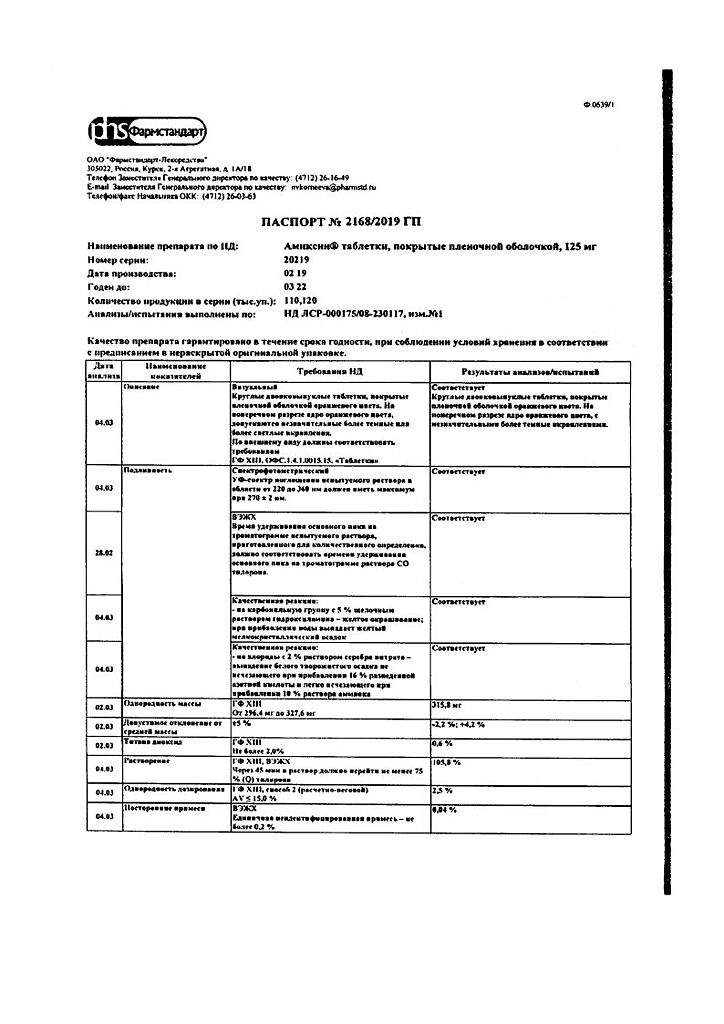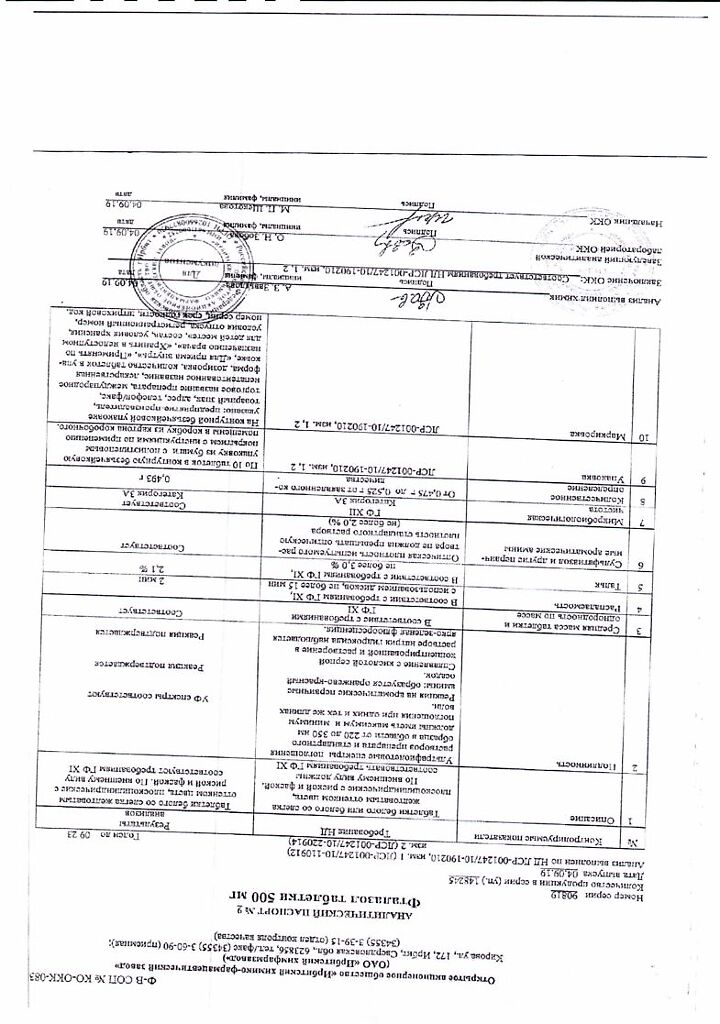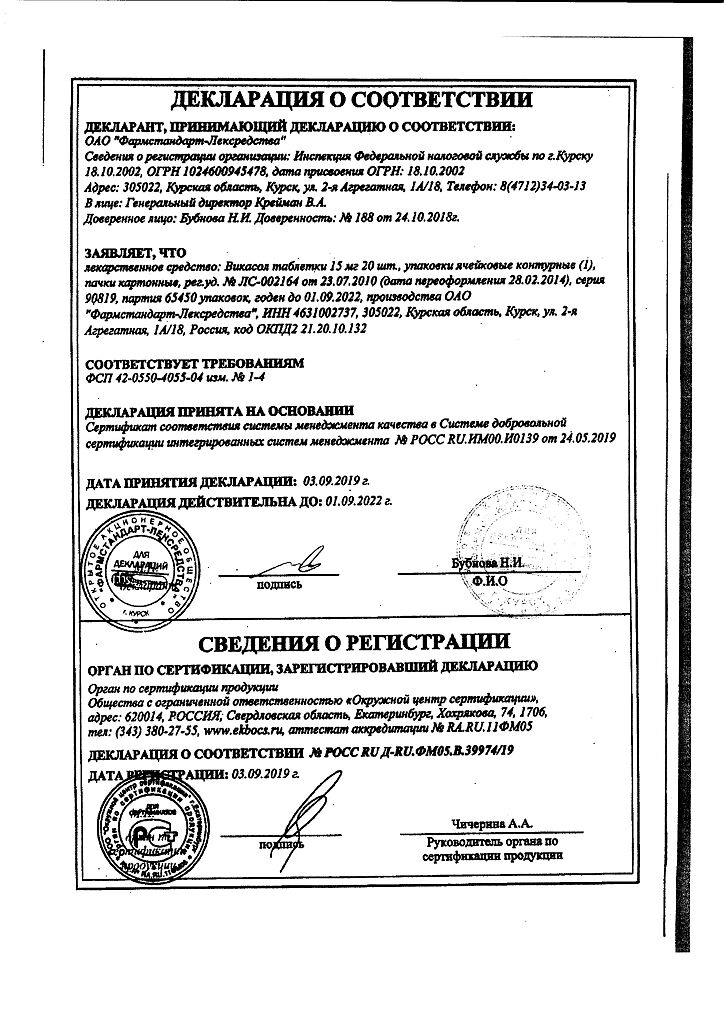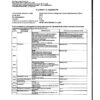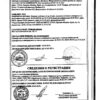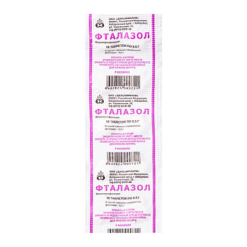No products in the cart.
Phthalazole, tablets 500 mg 10 pcs
€1.00
Out of stock
(E-mail when Stock is available)
Description
Pharmacodynamics
Fthalazole, like other sulfonamide drugs, similar in structure to PABA, by the principle of competitive relationship interferes with its inclusion in the synthesis of folic acid of the microbial cell. This leads to disruption of folic acid formation, which is involved in the synthesis of purine and pyrimidine bases, on which the growth and development of microorganisms depends. Phthalazole has the most pronounced bacteriostatic effect on vegetative forms of microbes. This effect develops gradually, because the microbial cell has some reserves of PABA. In addition, the degree of affinity of phthalazole with dihydrofolic acid synthetase, the enzyme that limits folic acid formation, is much weaker compared to PABA. Therefore, phthalazole must be administered in doses high enough to prevent the microorganisms from using the PABA contained in the tissues. Otherwise, resistant strains of pathogens may form that are not amenable to further exposure to sulfonamide drugs.
In addition to its antibacterial effect, phthalazole, like other sulfonamide drugs, has an anti-inflammatory effect, which is associated with its ability to limit leukocyte migration, reduce the total number of migrating cellular elements and partially stimulate GCS production.
The spectrum of antimicrobial action of phthalazole, like other sulfonamides, is narrower than that of antibiotics. Sulfonamides have bacteriostatic action against Streptococcus, Pneumococcus, Staphylococcus, Meningococcus, Gonococcus, Escherichia coli, Pseudomonas aeruginosa, Shigella dysenteriae, Proteus vulgaris and several major viruses – agents of trachoma and follicular conjunctivitis.
Pharmacokinetics
When administered orally the drug is slowly adsorbed from the digestive tract – only 5% of the administered substance is found in the urine, resulting in high concentrations in the colonic lumen, where under the influence of microorganisms the phthalazole molecule undergoes cleavage into phthalic acid, amino group and norsulfazole.
The latter has bacteriostatic effect on pathogens of intestinal infections (bacillary dysentery, colitis, gastroenterocolitis). It acts mainly in the intestinal lumen.
Indications
Indications
Active ingredient
Active ingredient
Composition
Composition
1 tablet contains:
the active ingredient:
Phthalylsulfathiazole 500 mg
How to take, the dosage
How to take, the dosage
Inside
In acute dysentery:
Adults in the first 1-2 days – 1 g 6 times a day, in the 3rd-4th days – 1 g 4 times a day, in the 5th-6th days – 1 g 3 times a day. The average course dose is 25-30 g. After 5-6 days, carry out the second course of treatment: Days 1-2 – 1 g 5 times a day (during the day – every 4 hours, at night – 8 hours), 3-4 days – 1 g 4 times a day (at night not given), 5 day – 1 g 3 times a day. The total dose in the second cycle – 21 g, with a mild course – 18 g. Maximal dose for adults: single dose 2 g, daily dose 7 g.
In children under 3 years of age – 0.2 g/kg in 3 doses for 7 days, over 3 years – 0.4-0.75 g 4 times a day.
In other infections:
Adults are prescribed 1-2 g every 4-6 hours for the first 2-3 days, half doses for the next 2-3 days;
Children – 0.1 g/kg/day in equal doses every 4 hours with an overnight break, 0.2-0.5 g every 6-8 hours for the following days.
Interaction
Interaction
The following interactions may be observed when using phthalazole together with other medicinal products.
PASC and barbiturates: the activity of sulfonamides is increased.
Thioacetasone, levomycetin: the possibility of agranulocytosis increases.
Nitrofurans: increased risk of anemia and methemoglobinemia.
Indirect anticoagulants: increased anticoagulant effect.
Oxacillin: decreases antibiotic activity.
The combined use of phthalazole with acids and acid-reacting drugs, hexamethylentetramine, adrenaline solution is not advisable because they are chemically incompatible.
When phthalazole is used in combination with drugs containing PABA esters (novocaine, anesthesin, dicaine), the antibacterial activity of sulfonamide is inactivated through a competitive mechanism. The effect is enhanced by antibiotics and well-absorbed sulfonamides.
Contraindications
Contraindications
Side effects
Side effects
Nervous system disorders: headache, dizziness, depressed mood.
Cardiovascular system: myocarditis, cyanosis.
Blood system disorders: in rare cases – leukopenia, thrombocytopenia, agranulocytosis, erythrocyte hemolysis. With prolonged use anemia may occur due to deficiency of pantothenic and pteroylglutaric acids produced by microbial cells.
Gastrointestinal disorders: nausea, vomiting, diarrhea, oral disorders (including stomatitis, gingivitis, glossitis), gastritis, cholangitis, hepatitis, vitamin B deficiency (due to suppression of intestinal microflora).
Respiratory system: eosinophilic pneumonia.
Urinary system disorders: urolithiasis.
Allergic and toxic-allergic reactions: drug allergy, including skin manifestations of drug allergy in the form of various rashes up to erythema multiforme and nodular, in some cases – epidermal necrolysis (Lyell’s syndrome). In some cases, allergic edema of the lips and face and periarteritis nodosa occur.
Additional information
| Shelf life | 4 years |
|---|---|
| Conditions of storage | In a dry, light-protected place at a temperature not exceeding 25 °C |
| Manufacturer | Irbit Chemical Plant, Russia |
| Medication form | pills |
| Brand | Irbit Chemical Plant |
Other forms…
Related products
Buy Phthalazole, tablets 500 mg 10 pcs with delivery to USA, UK, Europe and over 120 other countries.


